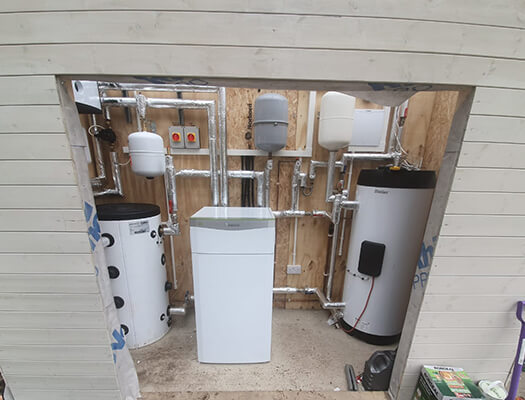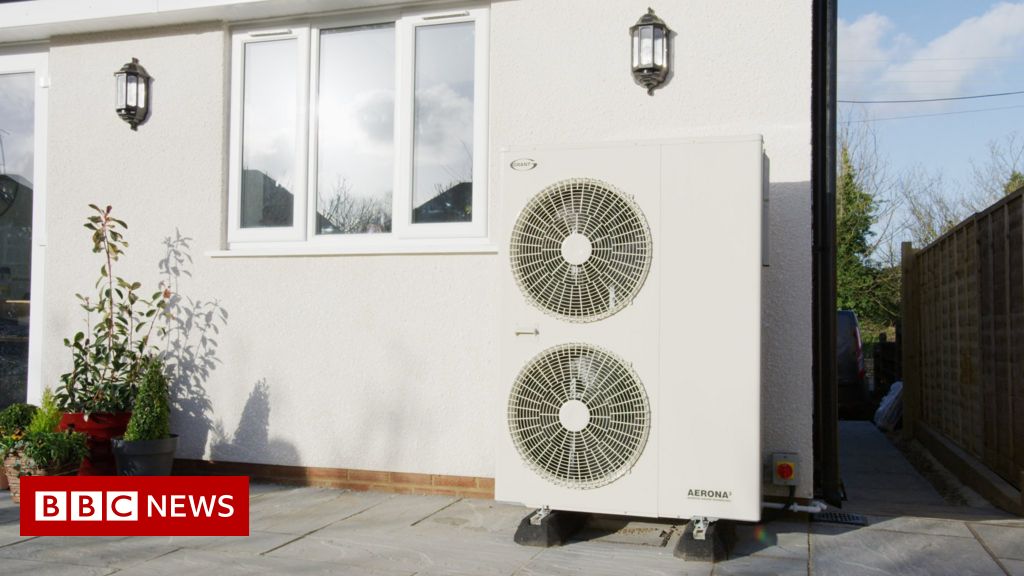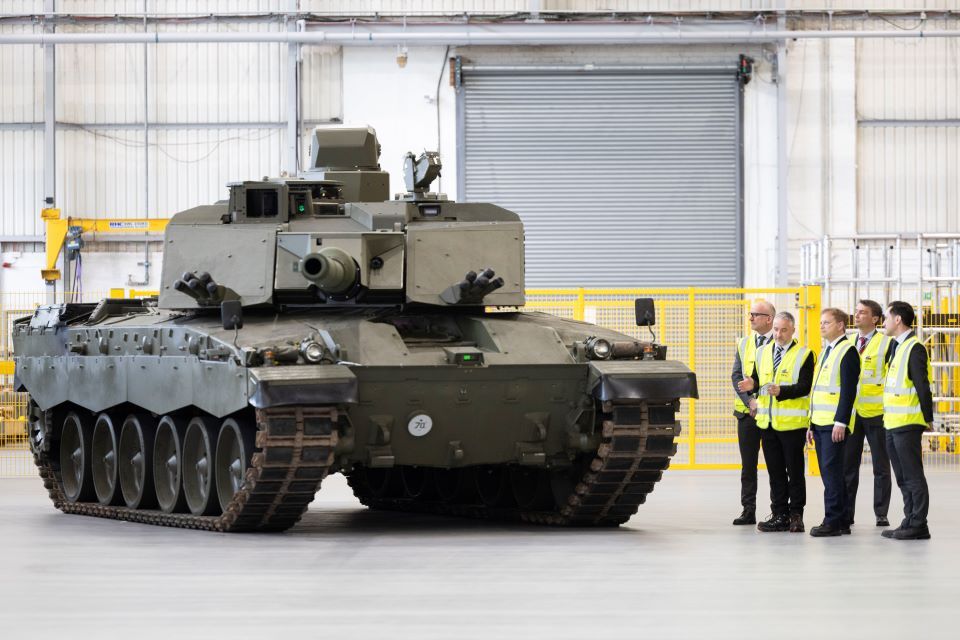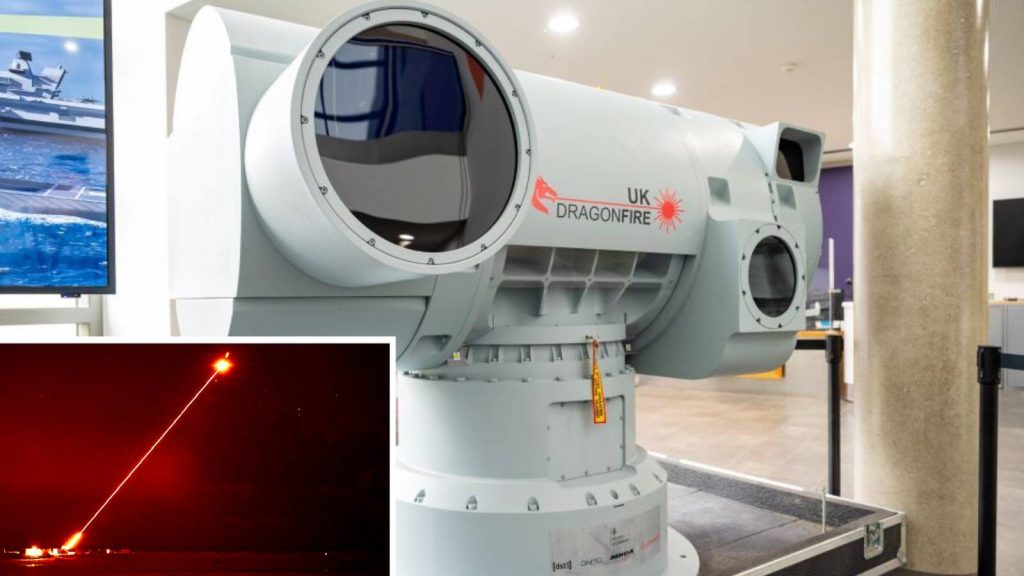In a typical household, most of the energy you buy is used to provide heating. So if you want to cut your carbon footprint significantly, you need to look at whether you can fit a low carbon heating system.
- Heat pumps
- Air source or ground source?
- Micro-CHP
- Solar thermal
- Hybrid systems
- What about funding?
Heat pumps
These take heat at a low temperature, usually from the ground or the outside air, and upgrade it to higher temperature heat that can be used in your home. They can usually provide all your space heating and hot water, and can operate completely automatically once you’ve set the controls how you want them.
Heat pumps are not zero carbon – they still use mains electricity to run. But they can be a low carbon heating system provided they run at high efficiency. To achieve this, they need to provide heat at a relatively low temperature. You’re more likely to be able to do this if you have at least one of the following:
- A well-insulated home
- Underfloor heating
- Radiators that are bigger than you would usually need
Air source or ground source?
Air source heat pumps takes heat from the outside air. They’re one of the easiest low carbon technologies to fit in terms of the space required – you just need somewhere to fit a small external unit about the size of a large suitcase. They can be one of the cheapest low carbon heating technologies to fit.

Ground source heat pumps collect their heat using pipes underground – either laid horizontally (you’ll need several hundred square metres of available land) or drilled down vertically (you’ll need room for the drilling equipment to arrive and operate). This generally costs more than fitting an air source system, but the temperature below ground doesn’t get so cold in the winter, which can help keep efficiencies up.
Micro-CHP
Combined Heat and Power, or CHP for short, means generating electricity and heat from the same unit. Micro-CHP units are designed to heat a single home, and they run on mains gas or LPG.
You can usually fit a micro-CHP unit in place of your existing gas boiler. It’s likely to be a little bit bigger, but can still be mounted on the wall. And you can plumb it into a standard central heating system and run just like any other gas system. So in many ways it’s the easiest low carbon systems to switch to, and to live with.
But it does still use gas, and not necessarily less than the boiler you had before. You only save carbon because of the electricity you’re generating at the same time, and from the same fuel. Micro-CHP is a lower carbon option than a standard gas boiler, but it’s not as low carbon as a well-designed heat pump system, or any wood heating technology using sustainable fuel.
Solar thermal
Solar thermal panels are usually used for solar water heating, and can typically provide around half your hot water use. They are very rarely used for space heating and, when they are, their contribution to the total space heating demand is pretty small.
They are themselves very low carbon – just a bit of electricity used to drive an extra pump and controller – but they only displace some of the heating fuel you’re using. If you’re still using fossil fuels for your main heating system, then you’ve still got a sizeable heating carbon footprint.
Hybrid systems
There are quite a few systems that can be described as hybrid technologies – this just means they use more than one heating technology. If anyone offers you a hybrid system, the first thing you need to ask is “What do you mean?”
Here are some of the hybrid systems currently on offer.
- PVT – Photovoltaic Thermal systems – combination of solar electric panels and solar thermal collectors in the same unit.
- Solar pre-heated heat pumps – a solar thermal collector preheats a fluid, and then a heat pump raises the temperature further so it can be used for space heating in any weather.
- Hybrid heat pump – usually this refers to a heat pump that can be switched to run on a conventional fuel like gas.
- Solar water heating – this isn’t usually called a hybrid system, but it pretty much always is. If you use solar water heating with another low carbon technology like a heat pump or wood boiler, then you could have a very low carbon heating system indeed.
What about funding?
Low carbon heating systems are generally more expensive than the mainstream options you’re probably comparing them with. But there are schemes that can help make them an attractive option in the longer term.
You can potentially get some financial help for heat pumps, biomass boilers and solar thermal panels through the Renewable Heat Incentive. This scheme pays you over time as you produce energy from renewable sources.
Previously, the Feed-in Tariff could provide financial help for micro-CHP. If you are already on the Feed-in Tariff scheme you can continue to receive your current benefits. However, the Feed-in Tariff scheme is only closed for new applicants. If you are considering installing new Small Scale Low Carbon Generation you may want to look at the Smart Export Guarantee (SEG) instead.






